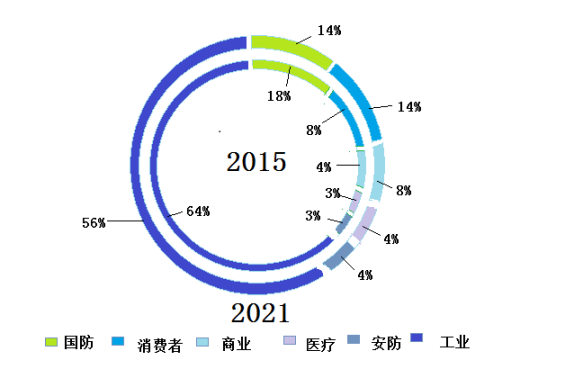
In recent years, robots have developed into complex machines with human limbs and sensory functions, and their motion programs are quite flexible, and do not need to be operated by humans in some work. The reason why these complex tasks can be accomplished is that the sensor plays a decisive role in robot control. It is precisely because of the existence of the sensor that the robot has the ability to perceive, act and react.
Sensors are the most fundamental core of information technology in the development of high-tech, and have been involved in all walks of life.
Sensors and robots excite perfect chemical reactions
Whether it's robots or driverless, smart phones or smart homes, or smart cities, sensors are essential. The collision between the robot and the sensor has produced a beautiful chemical reaction.
The sensor is the robot, which is equivalent to the perception and sensory system to humans. The sensor not only gives the robot five visual abilities, such as vision, touch, smell and taste, but also gives the robot a strong and sensitive response. In addition, the sensor can monitor the internal working state of the robot and the stability during work to ensure the safety of the robot during work and man-machine.
The robot is a sensor that is a good application landing scene. With the advent of Industry 4.0 and the continuous development of the robot industry, the demand for sensors has been growing rapidly. Therefore, the research and development of sensors has also ushered in the transformation and upgrading stage.
Demand for sensors has increased dramatically in the robot era
At present, the application of industrial robots in intelligent manufacturing is not uncommon, but the most common use is material handling, welding, polishing and inspection, which can reduce labor costs on the production line and greatly improve work efficiency. The role of the sensor is to monitor the entire robot production line, such as visualization, efficiency analysis, etc., to ensure that the production line can complete various tasks in a timely manner.
The development trend in the robot era is to develop more sensors, such as installation vision, laser sensing, force sense, torque and other types of sensors, in order to perform more complex tasks, and effectively save time and protect people's personal lives. Safety.
Robots do their work autonomously in an environment where no one is monitoring, so the robot's own environmental awareness and self-judgment decisions are especially important, and this involves various sensor products.
The robot is equipped with a variety of sensors both internally and externally, the most typical of which is the collaborative robot. Collaborative robots can work together with people through multiple sensors to complete work tasks more efficiently and safely.
Robot sensor market share
The technology of robots (including drones) is maturing, and the market is also experiencing an explosive phase. According to OFweek robots, the data of the robot market is expected to increase from the existing $27 billion to 2021. At 46 billion U.S. dollars, the average annual compound growth rate is 9.4%. Among them, in the application of robots, the defense, industry, and consumer sectors are mostly.

Revenue share of UAVs and robots in segmentation in 2015 and 2021
The business process of robots has accelerated in recent years, and the market share of its core device, the smart sensor, is gradually increasing. According to the data compiled by OFweek Robots, since 2015, the global robot sensor market is expected to grow from the existing 350 million US dollars to 709 million US dollars by 2021, with an average compound annual growth rate of 12.4. %.
Conclusion
It can be expected that in the future, the sensor will occupy half of the entire robot market scale system. As long as the entire opportunity is grasped, with the favorable policies and market, the sensor industry will usher in a broader development prospect.
















 RCCN WeChat QrCode
RCCN WeChat QrCode Mobile WebSite
Mobile WebSite